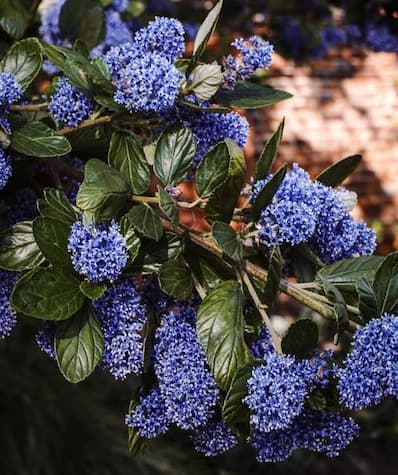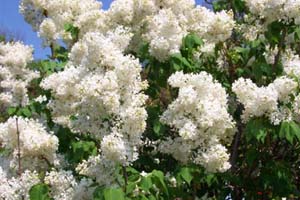Growing California Lilac Tree, Ceanothus

How to Grow Calironia Lilac Tree
The California Lilac Tree is a real charm to grow. This shrub is easy to grow. It puts on a bright, profuse display of colorful blooms in mid-spring. The blooms have a fragrant scent. As its name implies, California Lilac, or Ceanothus, is native to California. Its native range is along the Pacific Coast, from British Columbia in Canada, south to Mexico. There are approximately 50 species. 30 species are native to California. Their lifespan is 20-25 years.
Most species of California Lilac trees are evergreens, with a few deciduous varieties. The green leaves are small. Small, fragrant flowers bloom in clusters in mid-spring. Colors include many shades of blue, lavender, pink, and white. Flowers give way to three-lobed seed pods.
California Lilac (Ceanothus) is not related to Common Lilac (Syringa). California Lilacs like cooler summers and milder winters. The trees are much more drought tolerant. Additionally, they are also evergreens, while Lilac Syringa is not.
Plant Height: The smallest varieties grow just 6 inches. Most plants grow 12-20 feet.
Botanical Name: Rhamnaceae
Other Names: Blue Blossom Lilac, California Wild Lilac, Mountain Lilac, and Soap Bush.
This plant is nitrogen-fixing, improving the soil by putting nitrogen into it. As a result, the plant does best with little or no additional fertilizer.
Deer like California Lilacs. In particular, they feed on the plants in the winter months, when other food sources become scarce.
California Lilac Trees are a show-off, planted singly or in a hedgerow. Try them naturalized, in a cottage garden, too.
Propagating the California Lilac Tree
California Lilac is grown from seeds. They are found in the three-lobed seed pods that emerge after the flower has died off. Allow ample time for the seeds to mature.
Garden Tip: Watch for the first pods to begin to open and spill out their seeds. Then, you know the seeds are ripe and viable.
How to Grow California Lilac Tree
California Lilac trees prefer full sun to partial shade.
The shrubs will thrive in almost any soil. They prefer dry and well-draining soil.
Drought tolerant plants require little water, except in severe droughts, and during their first year. In the first year as the plants establish their root system, water 1-2 inches per week if conditions are dry. In future years, water every 3-4 weeks, only in severe droughts.
Use very little fertilizer, if any. Too much fertilizer can contribute to a shorter life span. For poor to average soils, fertilize once in the spring when the buds begin to swell, with a general-purpose fertilizer. In rich soils, do not add fertilizer.
Deadhead spent blooms for a neat appearance.
Prune plants right after the blooming period, to maintain a shapely plant. Do not prune branches larger than 1 inch.
Mulch around plants to maintain a well-groomed appearance.
Plant Problems
Yellowing leaves are usually a sign of too much water, too much fertilizer, or both.
Additionally, aphids and whiteflies can be an occasional problem. Treat with an insecticide or insecticidal soap, only if needed.
How To Grow Lilac Flowers Information
How to Grow – Learn how to grow beautiful, fragrant plants.
Lilac Festival – These Spring festivals are very popular.
Lilac Sunday – Without a doubt, it’s a holiday worth celebrating.
Flowers – About these beautiful blooms.
Lilac Pictures – See our lilac photo gallery.
Lilac Trivia – Cute and informant trivia.
Planting and Transplanting – how and when to move bushes.
Propagation – How to make new plants.
Pruning Lilacs – Most importantly, there’s a right way and a wrong way.
Pests and Disease – Prevent plant problems.
Varieties – In fact, there are over 1000 varieties.
California Lilac – It’s a tree.
Why no Blooms? – Identify and correct blooming problems.
Lilac Poem – By Walt Whitman.
Buy Lilac Bushes – Add beauty to your yard.

More How to Grow Lilacs Resources
How to Grow Lilacs – from Garden Hobbies
Buy Lilac Bushes select from popular Lilac varieties
Please support our site. Shop for:
- rmmatthews100@hotmail.com
- 585-721-6528
- Rochester, NY
©1999-2024 GardenersNet.Com, All Rights Reserved

